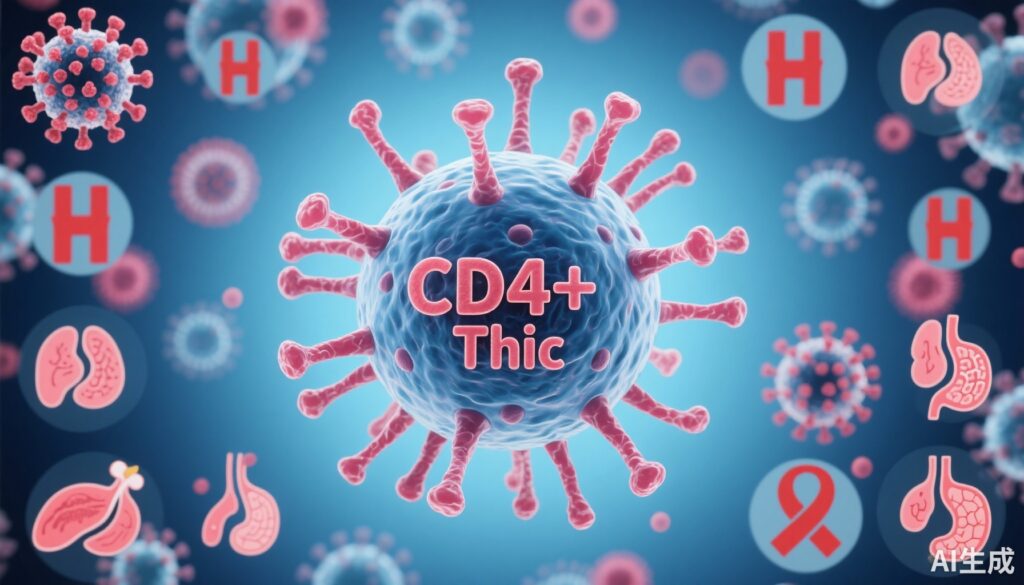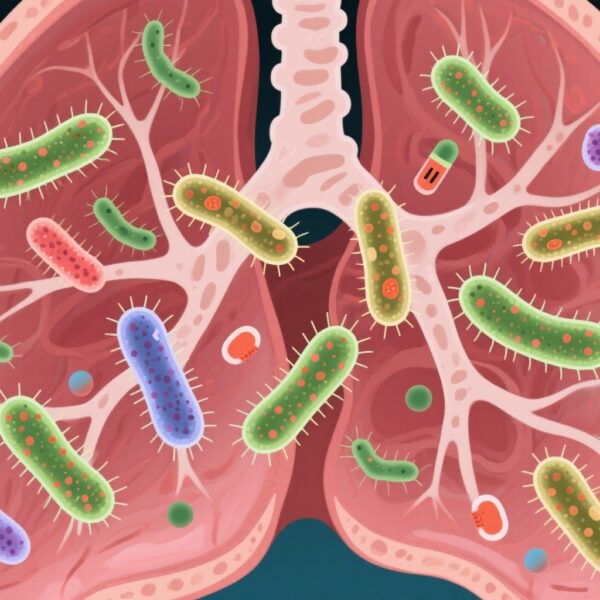Highlight
This prospective cohort study from the Third People’s Hospital of Shenzhen identifies immune non-responders (INRs) among people with HIV (PWH) as having significantly increased risks of both AIDS-defining and non-AIDS-defining diseases despite long-term antiretroviral therapy (ART). The study uses two CD4+ T-cell count thresholds to define INR status and demonstrates consistent findings across cohorts, highlighting the need for enhanced clinical monitoring and risk stratification beyond standard CD4+ T-cell assessments.
Study Background
Advances in antiretroviral therapy have dramatically improved survival for people with HIV (PWH). However, a notable subset of patients fail to achieve full immune reconstitution despite sustained viral suppression. These individuals, termed immune non-responders (INRs), have persistently low CD4+ T-cell counts, which are a key marker of immune competence. This incomplete immune recovery poses a substantial unmet medical challenge, as INRs are predisposed to higher risks of AIDS-defining illnesses and a broad spectrum of non-AIDS comorbidities including malignancies and organ-specific diseases. Understanding the long-term morbidity risk linked to INR status is critical to inform clinical management and preventive strategies for this vulnerable group.
Study Design
This was a prospective cohort study conducted at the Third People’s Hospital of Shenzhen, China. The study population consisted of PWH initiating or continuing ART, stratified into two cohorts based on baseline CD4+ T-cell counts: a low-threshold cohort with counts <350 cells/µL (n=7,874) and a high-threshold cohort with counts <500 cells/µL (n=8,077). Immune non-response was defined as failure to achieve the respective CD4+ T-cell thresholds (350 or 500 cells/µL) on two consecutive follow-up measurements. Participants were followed for median durations of 49.4 months (low-threshold) and 42.2 months (high-threshold) after immune status classification. The primary endpoints included incidence of AIDS-defining diseases (ADs) and non-AIDS-defining diseases (NADs), encompassing infections, malignancies, and chronic organ dysfunctions. Kaplan-Meier survival analyses and Cox proportional hazards models adjusted for confounders were employed to evaluate associations between INR status and disease outcomes.
Key Findings
Immune non-response was strongly and independently associated with increased long-term morbidity in PWH. In the low-threshold cohort, the adjusted hazard ratios (aHRs) indicated dramatically elevated risks of several AIDS-defining illnesses: pneumocystis pneumonia (aHR 10.10; 95% CI: 4.94-20.70), talaromycosis marneffei (aHR 7.38; 95% CI: 3.51-15.50), and AIDS-defining cancers such as Kaposi sarcoma or non-Hodgkin lymphoma (aHR 3.67; 95% CI: 1.20-11.20). Similarly, INRs exhibited increased risks of important non-AIDS conditions including end-stage liver disease (aHR 15.00; 95% CI: 5.59-40.00), cardiovascular disease (aHR 3.83; 95% CI: 2.14-6.87), chronic kidney disease (aHR 1.78; 95% CI: 1.23-2.58), and non-AIDS-defining cancers (aHR 4.75; 95% CI: 2.31-9.74). These results persisted in the high-threshold cohort, confirming the robustness of the findings.
The Kaplan-Meier analyses demonstrated significantly reduced disease-free survival among INRs compared to immune responders. The magnitude of risk increase was particularly notable for opportunistic infections and end-organ diseases, emphasizing the clinical consequences of sustained immunodeficiency despite viral suppression. Notably, the study accounted for confounding factors such as ART adherence, viral load suppression, and demographic variables in multivariate models.
Expert Commentary
These findings underscore the clinical complexity of managing PWH with suboptimal immune recovery. While ART effectively suppresses HIV replication, immune restoration failure remains a critical gap. Several hypotheses may explain this phenomenon, including persistent immune activation, thymic dysfunction, or co-infections contributing to CD4+ T-cell depletion despite controlled viremia. From a clinical perspective, the markedly increased comorbidity burden calls for enhanced surveillance not only based on virological control but also on immunological parameters.
Current treatment guidelines emphasize regular CD4+ T-cell monitoring; however, reliance solely on CD4 counts may underestimate the risk profile of INRs. Comprehensive risk stratification tools incorporating biomarkers of immune activation, inflammation, and organ function may be warranted. Furthermore, intensified preventive interventions such as earlier prophylaxis for opportunistic infections, targeted screening for malignancies, and management of cardiovascular or renal comorbidities could potentially mitigate the morbidity associated with immune non-response.
Limitations include the observational design, which cannot exclude residual confounding. The study’s single-center setting in China, although robust numerically, may limit generalizability across diverse geographic or ethnic populations. Nevertheless, the large sample size and rigorous immune classification strengthen the confidence in observed associations.
Conclusion
Immune non-response during ART, defined by failure to reach CD4+ T-cell thresholds of 350 or 500 cells/µL, is a strong predictor of long-term morbidity encompassing both AIDS-defining and non-AIDS-defining diseases. This highlights an important clinical subgroup of PWH at elevated risk despite effective viral suppression. Implementing more comprehensive risk assessment strategies and tailored clinical management focusing on immune restoration and prevention of comorbidities is imperative to further improve outcomes in this population.
Future research should explore mechanistic insights into immune non-response and evaluate interventions beyond ART to promote immune recovery and reduce long-term disease burden in HIV care.
Funding and Clinical Trial Registration
Details on funding and clinical trial registration were not stated in the published report.
References
Li X, Sun L, He Y, Zhao F, Luo Y, Zhao D, Wu H, He J, Jiang Y, Liu C, Lu H, Liu J. Two-threshold defined immune non-responders are associated with long-term morbidity in people with HIV: a prospective cohort study. Emerg Microbes Infect. 2025 Dec;14(1):2539198. doi: 10.1080/22221751.2025.2539198. Epub 2025 Aug 8. PMID: 40779390; PMCID: PMC12337743.



